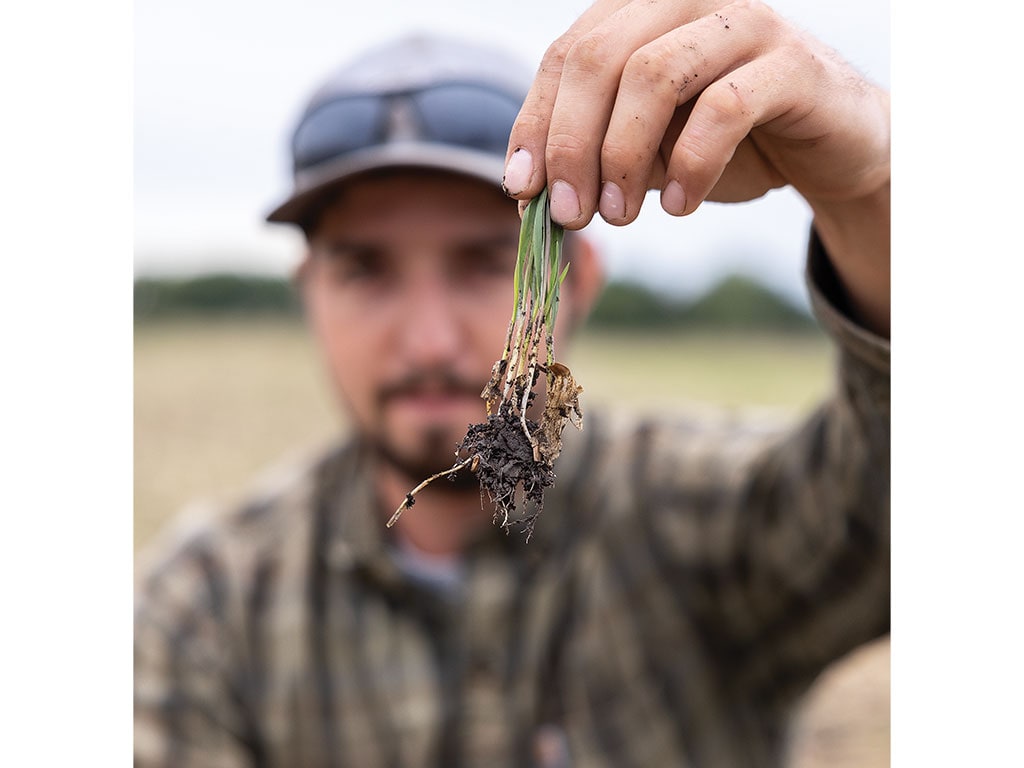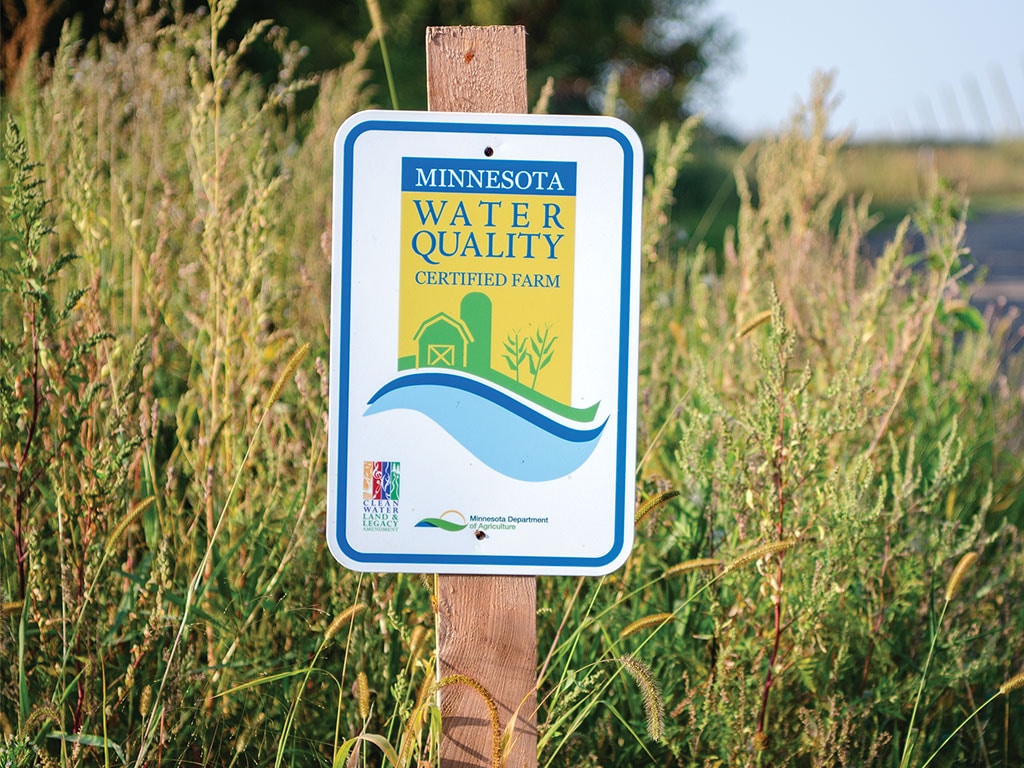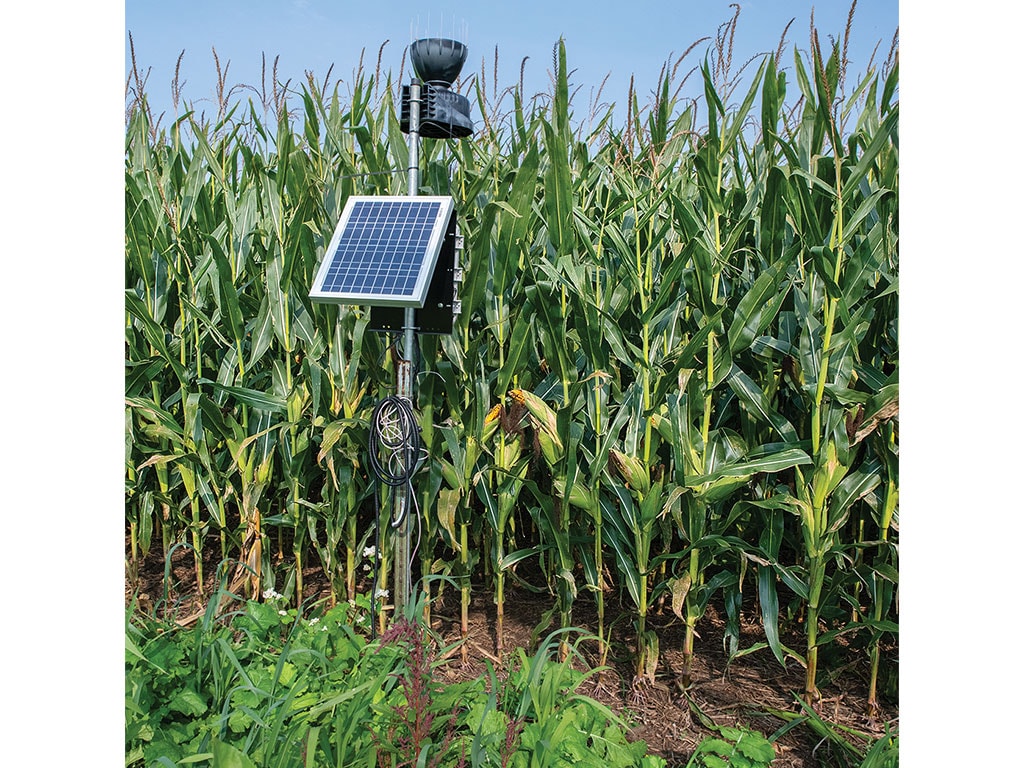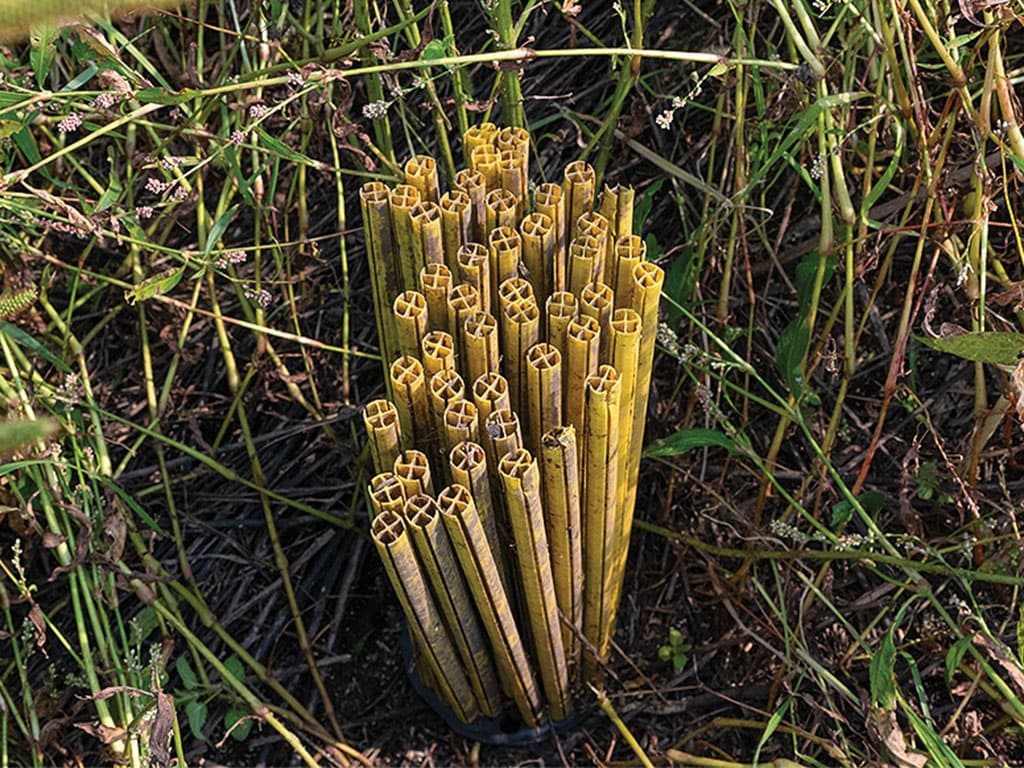Agriculture, Sustainability February 01, 2025
A Spectrum of Solutions
Water management techniques turn into profits.
by Katie Knapp
Farmers across Minnesota are proving that environmental stewardship and economic success can go hand in hand.
More than 1,500 producers voluntarily enrolled in the state's Agricultural Water Quality Certification Program. They have helped significantly improve the state's water quality and are consistently earning 14% higher profits.
The program started as a pilot project between Minnesota Department of Agriculture (MDA), USDA, and EPA in 2016 to address water quality issues at the field level. Once any risks are mitigated, the farm is certified and in compliance with any new water quality regulations for 10 years.
"We settled on a risk assessment system where we stand in every field—or even on each acre—to determine what could be a problem," says MDA program lead Brad Jordahl Redlin.
He and a team of accredited agronomists and conservation planners look for things like problematic topography, high tillage activity, and nutrient over-applications. They develop a plan with the farmer to improve each field. Program funding is available to help farmers cover the hard costs of implementing the solution.
"It is entirely site specific. We look at what could be harming the water and fix it. The program is not biased toward any certain practice because each field may react differently to the same practice." Jordahl Redlin stresses that focusing on risks rather than specific practice implementation is the key to the program's success.
Since 2016, MDA has certified more than 1.1 million acres across the state. Together, certified farmers have implemented nearly 3,000 new practices that, according to MDA data, are responsible for greatly reducing phosphorus, nitrogen, and topsoil loss and preventing 53,000 CO2-equivalent metric tons of greenhouse gas emissions per year.
That is a lot for something participating farmers say is "quick and easy for them to do."
Jordahl Redlin says each farmer spends about 10 hours or less to be certified and that 70% continue to add or change conservation management practices throughout their 10-year certification.
Above. As part of the Minnesota Water Quality Certification program, farmers across the state are adding tools like soil moisture probes to better manage irrigation water and low-velocity tile inlets to better filter drainage water.
Reducing risk pays. Part of why Jordahl Redlin believes these forward-thinking producers keep working on their water quality is because, in doing so, they are also improving their books.
Of the more than 1,500 farms currently certified, about 125 also are enrolled in Minnesota's Farm Business Management program. Keith Olander (program lead with Minnesota State's Northern Agricultural Center of Excellence) and his team have studied the past five years of financial records for farmers in their program.
The results show the average annual farm income for those with water quality certification is 14% higher than those without it ($209,231 versus $183,289).
That begs the question: what is the thing that makes certified farms more profitable?
"We'd love to say there is one practice. That would make it so easy. But there is not. The fact is we are helping maximize their performance," Jordahl Redlin explains. "Whether in a sewing circle, a farm, or a Fortune 500 company, if you work on maximizing performance and avoiding loss, it will show up on the bottom line."
Olander agrees. Minnesota farmers are proving that the more they manage each acre based on its unique risk profile, the better the whole farm performs.
"I've tried to poke holes in the data, and I cannot," Olander says, almost in disbelief. "The higher profit comes from reducing risk across the whole operation."
Olander has also analyzed the data to see if any demographics account for the difference. Again, he says nothing stands out.
The success of this program and the farms in it illustrate there are many ways to reduce environmental issues without it costing the farm long-term. ‡
Read More

AGRICULTURE, SUSTAINABILITY
Rooted
Farmers can lead the way in preventing sedimentation.

AGRICULTURE, SUSTAINABILITY
Cutting Back on Salt
Districts battle saline groundwater with science and creativity.




